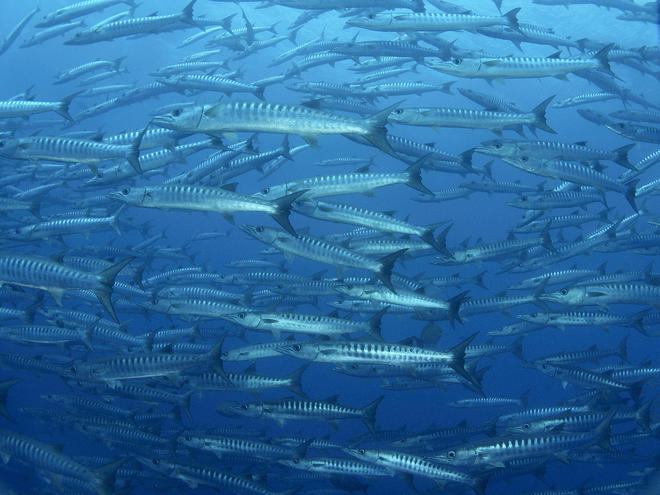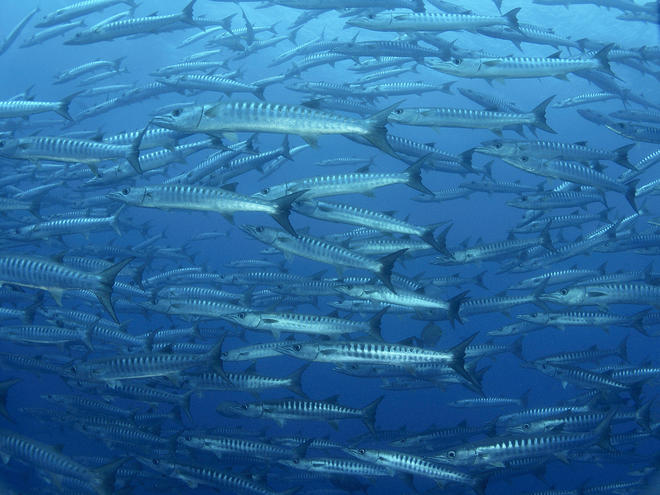From ocean to plate
Published by the World Wildlife Fund

When you chow down on a tuna melt or shrimp scampi, do you ever wonder how it got to your plate? Every seafood journey is different but has at least one thing in common: it goes through a lot to get there.
Unfortunately in their journey across the supply chain, around 35% of harvested fish and seafood is either lost or wasted — with other studies putting that number closer to 50%. Where does this loss happen? It can happen at any stage, from bycatch to processing plants to grocery stores or restaurants to our own kitchens.
The amount of seafood we lose each year could help feed millions around the world. It also represents a loss of biodiversity in our oceans and a waste of all the resources used to grow, transport and refrigerate that fish along the way (feed, fuel, and energy).
By cutting down on seafood waste, we can make better use of what we harvest, increase the availability of nutritious seafood for people around the world, and take some of the burden off our fisheries.
What can we do as consumers? We can consume more conscientiously, which can start by rethinking fresh versus frozen.
Buying frozen
Even in coastal areas, most of what you see at the fresh seafood counter in your grocery store has already been thawed from frozen. That means it only has a few days of shelf life left in your refrigerator. Buying frozen seafood has several benefits:
Safety: By keeping fish frozen, there’s less chance of microbial growth, which means it’s safer longer if handled properly.
Convenience: It will keep longer in your freezer at home, so you don’t have to cook it right away, which means less chance it will wind up in your trash. Frozen seafood can also be bought in bulk and stored at home, and is often individually pre-portioned, so you can cook what you need and save the rest for later.
Less waste: Keeping it frozen from sea to fork reduces the risk of spoilage and loss during processing and along the supply chain. 10 to 20 percent of the “fresh” seafood you see at the grocery store counter may wind up in the trash due to expiration, damage or spoiling.
Cooking frozen
Did you know you don’t have to defrost most seafood before cooking? It can be prepared and cooked from frozen, which can be a big timesaver and help overcome the safety barrier some fear in cooking fish. You can find dozens of recipes online to cook straight out of the freezer.
And, as it turns out, the cold never bothered most diners, anyway! In studies conducted by both the Drexel University Food Lab and Oregon State University’s Food Innovation Center, it was found that many diners preferred recipes with seafood that was cooked directly from frozen over fresh-from-the-grocery-store samples.
Look for the labels
By choosing primarily certified sustainable foods, you can send a message to your favorite grocery stores and brands that sustainability matters to you.
Marine Stewardship Council‘s blue MSC label ensures your fish can be traced back to a sustainable source. The label is found on fresh and packaged wild seafood from sustainably-managed fisheries certified by the global leader in independent seafood certification, which ensures fish are only caught at levels that that allow populations and surrounding ecosystems to remain healthy and productive for future generations. They also minimize incidental bycatch to ensure healthy oceans.
The teal label of the Aquaculture Stewardship Council certification is given to farms that produce seafood in ways that are environmentally and socially responsible. The criteria for certification help prevent the destruction and pollution of critical habitats including mangroves, protect communities and workers’ rights, and promote the efficient use of energy, water, feed, and other valuable natural resources.
Read the full article at: http://feedproxy.google.com/~r/WWFStories/~3/Mstm0anzsDM/from-ocean-to-plate


